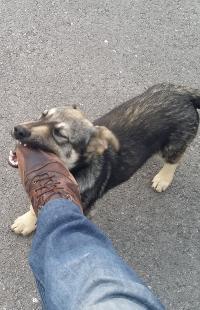Search Results (Searched for: )
- Hossein74Majidi
- Hossein74Majidi
22 Dec 2024 12:05
Replied by Hossein74Majidi on topic G Code Syntax Check (Python + Qt Designer)
G Code Syntax Check (Python + Qt Designer)
Category: Qtvcp
- zieluch
- zieluch
22 Dec 2024 11:42
Replied by zieluch on topic Inconsistent values from Versaprobe
Inconsistent values from Versaprobe
Category: Qtvcp
- resmond
- resmond
22 Dec 2024 11:33
Replied by resmond on topic Choosing AC vs. DC for stepper motor drivers
Choosing AC vs. DC for stepper motor drivers
Category: General LinuxCNC Questions
- CaspianCmonster
- CaspianCmonster
22 Dec 2024 11:14
help with tool setter was created by CaspianCmonster
help with tool setter
Category: General LinuxCNC Questions
- elovalvo
- elovalvo
22 Dec 2024 11:10
Replied by elovalvo on topic LinuxCNC on Raspberry Pi 5
LinuxCNC on Raspberry Pi 5
Category: Installing LinuxCNC
- MarkoPolo
- MarkoPolo
22 Dec 2024 11:07
- Guytou
- Guytou
22 Dec 2024 10:42
- tommylight

22 Dec 2024 10:19
Replied by tommylight on topic One axis loosing it completely
One axis loosing it completely
Category: General LinuxCNC Questions
- epineh
- epineh
22 Dec 2024 09:10
Replied by epineh on topic LinuxCNC-RIO - RealtimeIO for LinuxCNC based on FPGA (ICE40 / ECP5)
LinuxCNC-RIO - RealtimeIO for LinuxCNC based on FPGA (ICE40 / ECP5)
Category: Computers and Hardware
- rodw

22 Dec 2024 08:09
- cmorley
- cmorley
22 Dec 2024 08:07
- cmorley
- cmorley
22 Dec 2024 06:49
- M4MazakUser
- M4MazakUser
22 Dec 2024 05:55
Replied by M4MazakUser on topic Threading Index Varies With Speed
Threading Index Varies With Speed
Category: General LinuxCNC Questions
- Max
- Max
22 Dec 2024 05:22 - 22 Dec 2024 05:26
One axis loosing it completely was created by Max
One axis loosing it completely
Category: General LinuxCNC Questions
Time to create page: 0.360 seconds
